Commercial-Scale Application
Repository development demands a significant jump in scale and activities to move from the research bench to true commercial-level application. Our interlocking programs are designed to provide a full range of practical solutions at any level of application.
Aquaculture is a vital part of U.S. economy, producing 680 million pounds of marine and freshwater species valued at $1.5 billion in 2018. The genetic resources of these aquaculture species are therefore valuable, however, we currently do not have the capability to protect them. Genetic lines of species that have been selectively bred to enhance desired characteristics are maintained as live populations. This leaves them susceptible to predation, disease, or natural disasters that could wipe out decades of genetic improvement and leave aquaculture operations at risk. Germplasm repositories offer a solution to these pressing concerns.
A germplasm repository is a collection of cryopreserved genetic material, such as sperm, stored alongside associated information (phenotypic, physiological, genetic, etc.). By storing genetic material from aquaculture species in a repository the genetic resources (and any genetic improvements) of that species are safeguarded from potential threats. Additionally, any information associated with repository samples can be stored in the repository database ensuring data and samples will not be separated and giving the samples their true value. Despite the advantages of using repositories in aquaculture and the successful cryopreservation protocols developed for numerous species, a commercial-scale repository system does not yet exist for any aquatic species. One reason for this is the lack of resources available to translate a laboratory technique for cryopreservation into a process capable of meeting the needs of the commercial industry. Our mission at the AGGRC is to protect valuable genetic resources by assisting the aquaculture community in building repositories for aquatic species. The AGGRC is dedicated to providing tools, protocols, and guidance to interested parties looking to start building a repository. Our unique combination of research capabilities paired with our dedication to commercial application allows us to provide models for repository development that will function at any scale of operation.
Commercial-Scale Capabilities

Quality Management
Quality management is one of the most important capabilities required in a repository. Quality management consists of two aspects: quality assurance and quality control. Quality assurance activities are “process oriented” and aim to prevent defects and errors from occurring with the material being handled. An example of quality assurance is checking a piece of equipment before use to ensure proper function and prevent damage to samples. Quality control activities are “material oriented” and focus on defect identification in the material being handled. An example of quality control is viewing collected germplasm with a microscope before freezing to screen for low-quality samples and collect important data like concentration or motility. Quality management allows repositories to function at high levels of throughput without sacrificing sample quality.
Database
A database to store the four types of information collected in association with stored samples is another necessary capability of a repository. A database should be updated regularly and have strict guidelines to ensure data collected through time is consistent and of high quality. The database should also be accessible to all members of the community surrounding the repository so information can be shared. The USDA’s National Animal Germplasm Program database, called Animal GRIN, is a good example of a high-quality database open to the public.
Automated Processing
Automated processing is necessary for any repository operating on a commercial scale. During cryopreservation germplasm samples need to be stored inside a freezing container, such as a French straw, and the container must be sealed and labeled. Without automated processing this process would be too time-consuming and unable to meet industry demands. The AGGRC uses a combination MPP Quattro and MiniJet printer with the capacity to fill, seal, and label 15,000 French straws per hour. The AGGRC also uses a Multicoder straw printer that can label not only French straws but other storage containers, such as daisy goblets.
Computer-Controlled Freezing
Freezing samples using consistent and known cooling rates is required for a successful repository . This is an important aspect of quality management that ensures samples frozen and stored in the repository were not damaged during the freezing process. Repositories must also be able to freeze a large number of samples at the same time to meet commercial-scale needs. The AGGRC uses a Sy-Lab IceCube 14M Controlled Rate Freezer capable of freezing over 2,500 straws at once, to produce consistent cooling rates and save cooling rate data.
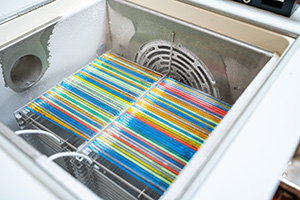
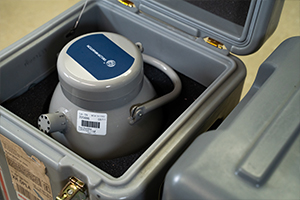
High-Capacity Storage
After freezing, samples must be kept frozen and stored properly to avoid accidental thawing and damage to the sample. High-capacity cryogenic storage units are available to store thousands of samples safely.
Frozen Sample Shipping
During shipping sample must also be kept frozen and stored properly to avoid thawing and damage. Shipping dewars keep hundreds of samples frozen and protected and can be sent nationally and internationally without risking sample damage.

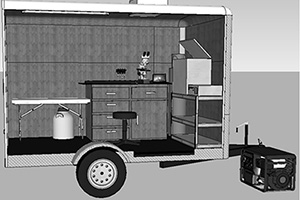
On-site Cryopreservation & Demonstration
A different repository model may involve traveling to various farm sites to freeze samples as opposed to all sample being process in a central repository facility. For this mobile repository model to work, on-site cryopreservation capabilities must exist. The AGGRC has built a mobile cryopreservation laboratory capable of traveling to various locations, and reliably freezing and transporting thousands of samples. This mobile laboratory also serves as a demonstration tool to engage members of the aquaculture industry and show the possibilities of a commercial-scale repository.
Featured Projects
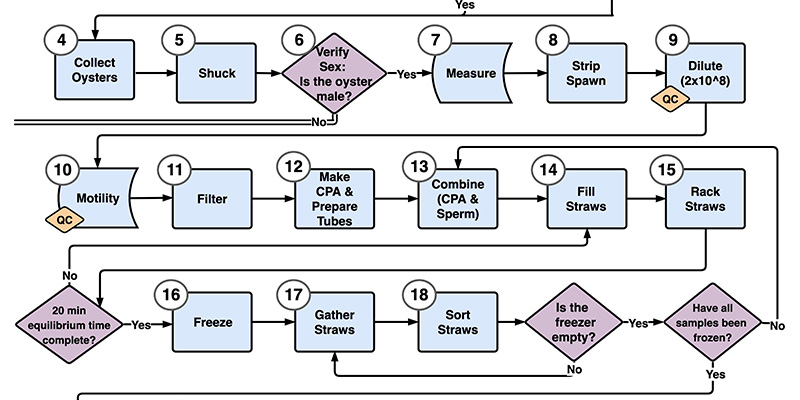

USING SIMULATION MODELING OF HIGH-THROUGHPUT EASTERN OYSTER CRYOPRESERVATION TO DEVELOP GERMPLASM REPOSITORIES
SARAH BODENSTEIN -
SCHOOL OF RENEWABLE
NATURAL RESOURCES
Commercial-scale sperm cryopreservation for blue catfish
E. HU -
SCHOOL OF RENEWABLE
NATURAL RESOURCES


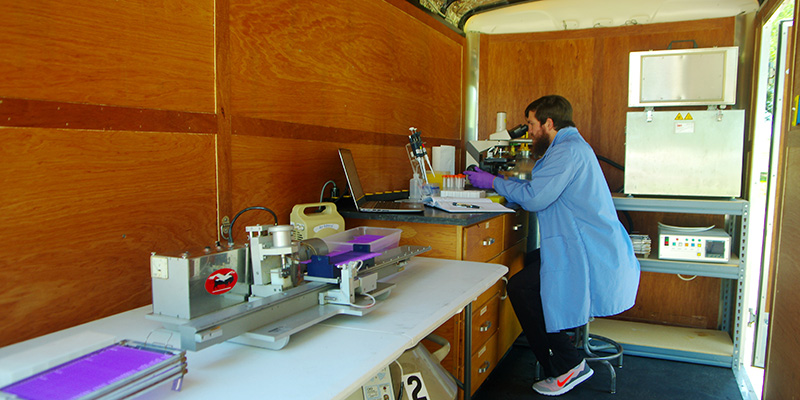

ON-SITE SPERM CRYOPRESERVATION FOR AQUATIC REPOSITORY DEVELOPMENT AND USER GROUP LINKAGE
WILLIAM CHILDRESS -
SCHOOL OF RENEWABLE
NATURAL RESOURCES
PROCESS SIMULATION, OPERATION COST ESTIMATION AND OPTIMIZATION FOR HIGH-THROUGHPUT CRYOPRESERVATION OF BLUE CATFISH SPERM
E. HU -
AGGRC
SCHOOL OF RENEWABLE
NATURAL RESOURCES
